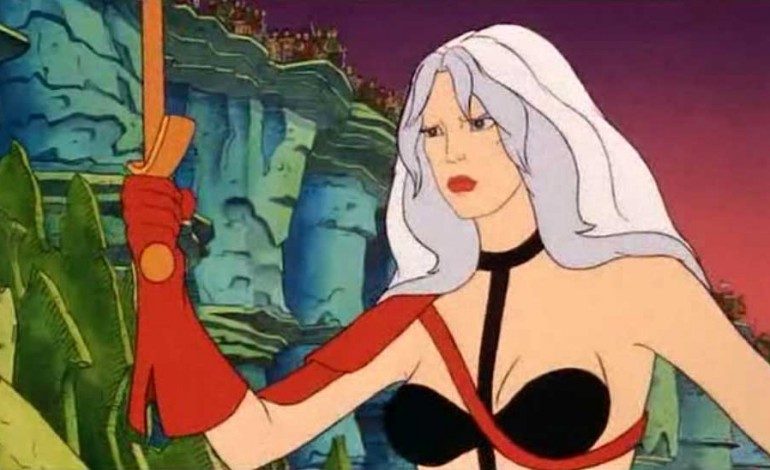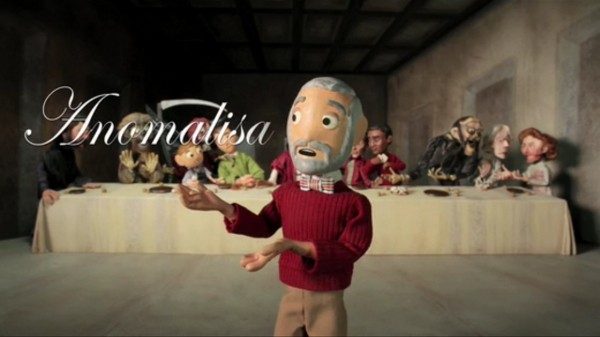

For all of the concepts and styles that television has adopted from film since entering into its Golden Age, film has been slow to take ‘advice’ from its smaller screen cousin. One notable absence in the world of cinema is adult animated movies. This is particularly disappointing considering how some of the best work on television over the past two decades has come from literally two-dimensional leads. (Important note: I will be focusing exclusively on American animation. I am well aware that amazing work has been done overseas, but I am not well-versed enough in them to speak about it.)
Everybody loves animated movies. They’re generally critically and commercially successful, can appeal to people of all ages, and provide easy merchandise opportunities. It’s a win-win for audiences and studios alike. But the animated movie landscape disappointingly lacks diversity – and not in the Disney Princess Ethnicity Checklist way. We have the annual offering from tear factory Pixar as well as the less emotionally traumatizing works from Walt Disney Studios, which has undergone a resurgence over the past several years but is still essentially formulaic. The underrated Laika often brings stop motion back to life with remarkable works like ParaNorman. Plus we receive the annual “treat” of uninspired CGI animated films whose biggest selling point is a bevy of famous actors doing voices (e.g. Epic, Rio, The Nut Job, Madagascar, Angry Birds, The Secret Life of Pets, etc.).
Every couple of years, there will be a nifty outlier that stands apart from its contemporaries, whether due to having a unique voice at the helm (e.g. Wes Anderson with Fantastic Mr. Fox), featuring a remarkable visual style (e.g. the incredible detail given to the world of Rango), or just by being genuinely fun (e.g. The LEGO Movie, as compared to other voice actor-heavy, pop culture influenced CGI affairs). But what do all these movies have in common? They’re primarily made for kids. Sure, a lot of them appeal to adults and thankfully don’t talk down to the audience, but at their core, they’re for children. This isn’t necessarily a bad thing, but there’s almost nothing in this cinematic world primarily meant for adults to enjoy. (One notable exception is The Simpsons Movie, which is still family friendly. Another is the relentlessly depressing but fantastic Mary & Max, which most certainly is not.)
Yet while movies have remained stuck in this unfortunate bias towards the animated genre, television has been experimenting with the adult-audiences animated show for well over 20 years now and has achieved great success with it – both commercially and critically. One can probably trace this back to 1989 when The Simpsons first entered our lives (and will never leave), but that was only the precursor of what was to come. The 90s produced more grown-up, albeit shorter lived, animated shows such as The Critic (1994 – 1995) and Duckman (1994 – 1997), both of which featured early progenitors of the depressed anti-hero protagonist that define this Golden Age of Television. Since its 1997 premiere, South Park has been one of television’s most consistently revolutionary series (new season starts September 16). One also must credit Fox for giving us Futurama (1999) (until unjustly cancelling it) and blame Fox for giving us Family Guy (1999) (and unjustly bringing it back), both of which are still popular today. And it’s impossible to acknowledge the modern trend in animation for adults without crediting the launch of Adult Swim on September 2, 2001. For over a decade, it has served as one of the most important homes for animated programming as well as other brands of offbeat, surreal series and specials that could not find a home anywhere else. It has become quite the powerhouse since the early days of just Space Ghost: Coast to Coast and Aqua Teen Hunger Force (which only ended its run last month).
Today, animated programs are among the most wildly creative and emotionally engrossing programming on television. Shows like FX(X)’s Archer, Adult Swim’s Rick and Morty and The Venture Bros., and Netflix’s BoJack Horseman represent some of the best the television format has to offer. Its leads and co-stars feel as real as their live action counterparts. These dysfunctional characters face legitimate existential crises and actually have character arcs; they can change throughout the series and minor characters grow into major ones. Many of these series have ongoing storylines that are complex and intricate with clues peppered in across multiple years. Unlike the episodic nature of The Simpsons, these shows actually have plots that continue from season to season. However, in the same way The Simpsons made Springfield into its own world, the freedom of animation allows these other shows to construct intricate universes and extensive mythologies that would be unfeasible in a live action format. And it’s for a rare live-action show to be as clever or consistent with callbacks, in-jokes, and subtle references as most of these animated series. These shows bear re-watching because paying close attention pays off significantly in the long run. Even children’s cartoons such as Adventure Time have upped their game with that Cartoon Network series recently posing heavy questions on dream theory, sentience, nuclear annihilation, and the death of God.
Yet animated films? We’re still essentially stuck with the same basic characters, themes, and formats that we’ve had since Walt Disney held a pencil. As innovative as Pixar can be in presenting its concepts, the studio is still focusing on the inner child. To be sure, that’s what they know (as well as where most of the money is made), but it’s a shame that the outer adult is continuously ignored, especially because television regularly provides evidence of the unlimited storytelling potential of cartoons for grown ups.


The long awaited new Charlie Kaufman film, which counts Dan Harmon of Community and Rick and Morty among its executive producers
Thankfully, we do have a couple of more adult-oriented animated movies on the horizon. After several failed starts, Charlie Kaufman is finally back with a new movie following his 2008 masterpiece Synecdoche, New York, and it’s a stop-motion animated affair entitled Anomalisa. It premiered at this year’s Telluride Film Festival to early fantastic reviews. Next August, Seth Rogen and regular writing partner Evan Goldberg will take on recent animated films with Sausage Party an R-rated parody on the modern CGI animated spectacle that stars supermarket foods voiced by an all-star cast who must meet their digestive fate on the Fourth of July. While this bawdiness might not seem to possess the character study of BoJack Horseman or the rich universe of The Venture Bros., at least it’s a start.
